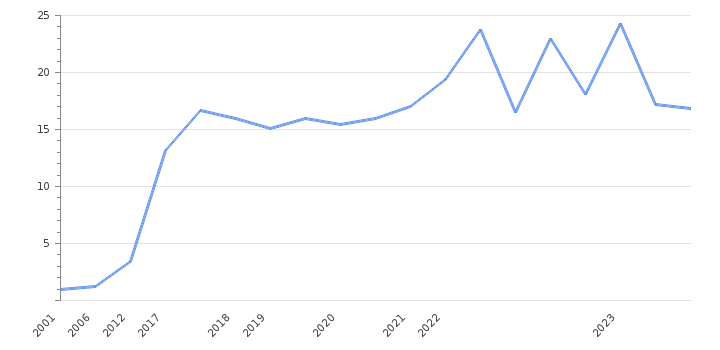
The latest Labour Force survey (2024 Q1) reveals a significant decline in Rwanda’s unemployment rate, dropping by 4.3 percentage points in quarter 1 of 2024 compared to the same period in 2023. This remarkable improvement has brought the unemployment rate back to the pre-COVID-19 estimate of 13.1%. In 2024 (Q1), the unemployment rate stood at 12.9%, indicating a positive trend where approximately one person was unemployed for every eight in the labor force.
Gender disparities persist in unemployment, with females experiencing a higher rate at 14.5% compared to males at 11.5%. Furthermore, youth face a notably higher unemployment rate of 16.6% compared to adults at 10.3%. Urban areas also bear a heavier burden with an unemployment rate of 14% compared to rural areas at 12.3%.
Despite these challenges, there is progress in narrowing the gender gap in unemployment, which was recorded at 3 percentage points in 2024(Q1), showing improvement from 3.7 percentage points in the same quarter last year. This data underscores the need for targeted interventions to address unemployment disparities across demographics and regions, ensuring inclusive economic growth and opportunities for all Rwandans.
The Labour force
The latest labour force survey paints a detailed picture of Rwanda’s workforce. Out of an estimated working-age population of 8.2 million (16 years and above), approximately 4.37 million are employed. However, 648 thousand individuals are currently unemployed, while 3.2 million are categorized as out of the labour force. Together, the employed and unemployed comprise a labour force of 5.0 million individuals.
Interestingly, the labour force participation rate, representing the proportion of the working-age population actively engaged in the labour force, has shown a steady increase since 2021 Q1. By 2024 Q1, this rate reached 61.0%, marking a 2.4 percentage point rise from the previous year’s estimate of 57.6%.
Notably, the gender disparity in labour force participation persists, with males consistently exhibiting higher participation rates than females. In February 2024(Q1), this gender gap stood at approximately 14.6 percentage points, mirroring the situation observed in the same quarter of the previous year.
Employment
The Employment-to-Population Ratio (EPR) serves as a critical measure of the economy’s ability to provide income-generating opportunities for individuals of working age (16 years and above). As population grows, aggregate employment typically increases, reflecting economic vitality.
In 2024 Q1, the EPR increased to 53.1%, showcasing a significant rise from the 47.7% recorded in 2023 Q1. This increase of approximately 5 percentage points holds true for both males and females, indicating broad-based employment growth.
However, gender and age disparities persist in the distribution of employment. Males exhibited a notably higher EPR at 60.9% compared to females at 46.3% in 2024 Q1. Similarly, adults boasted a higher EPR of 57.4% compared to youth aged 16-30 years old, who stood at 47.7%. (End)
